Soundcore Space One
Soundcore Space One Review
I have been a fan of the Soundcore Q30 for a while, with the right EQ it can sound great. It is a budget “audiophile” secret especially with its decent ANC. Then I spotted the Soundcore Space One launch and given that it seems to be aiming at the same sub $100 market I thought It would be worth seeing if it can replace the Q30 for my commuting and travelling needs.
More details on the Soundcore Space one https://eu.soundcore.com/products/space-one-a3035031
Note: This review was updated with better measurements
In this review, I thought I should share my finding
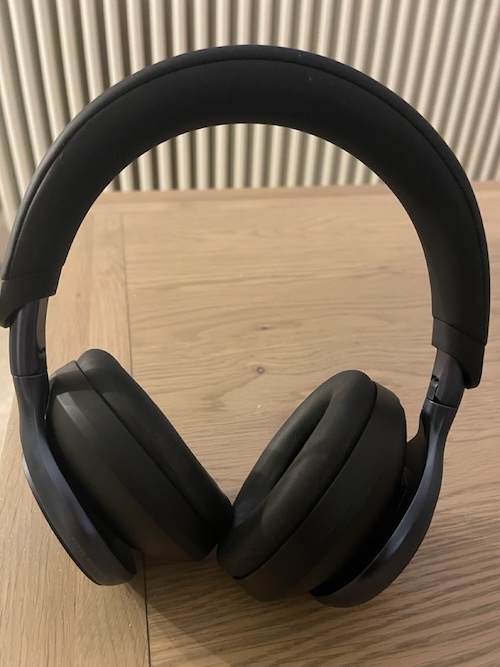
I got the black model but there are 2 other colours available.
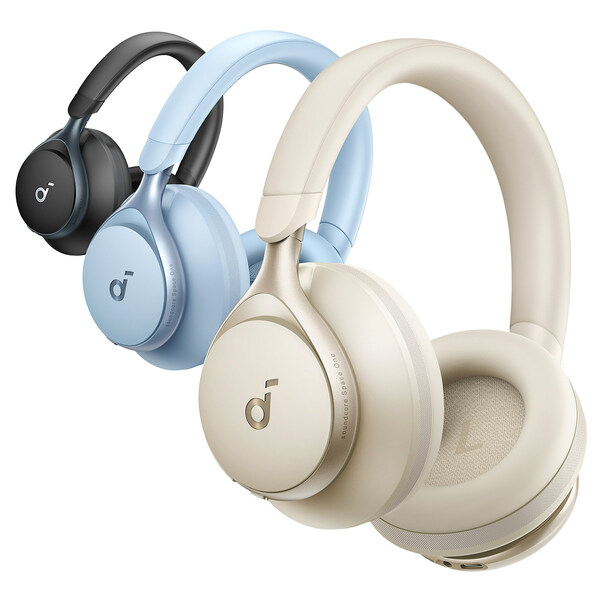
What’s in the box and Build Quality
Not as much in the box as previous Soundcore headphones, specifically it is missing the normal hard shell carrying case. For me this is a non-issue and Space One does come with a carrying bag, if I really want to “pack it” for a long trip. Other than that you get the usual charging cable and audio cable and documentation.
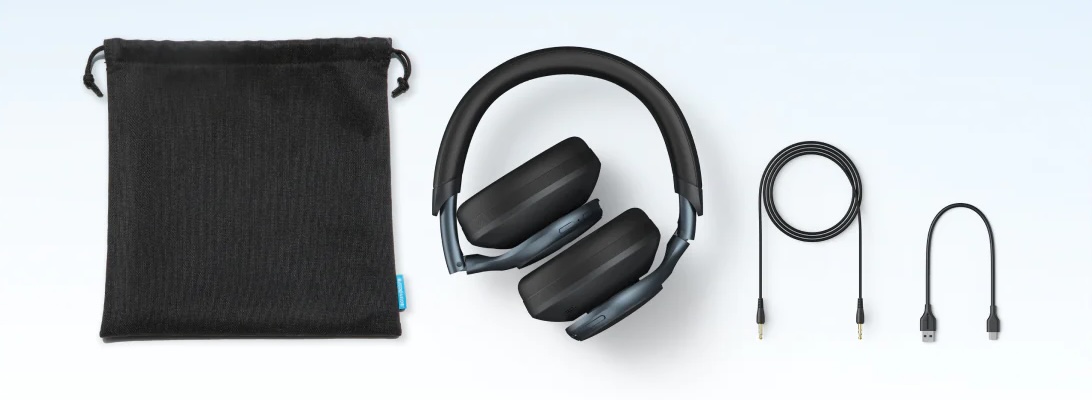
The build quality is good for this price range though it is all plastic. The design looks much more premium than the Q30 / Q35 models and debatable even more premium looking than Soundcore top model, the Q45 especially from a distance, but because the Space One uses all plastic material it does slightly betray when directly compared against the Q45 model. There are little touches in the design which I do appreciate like it’s now much easier to tell the left and right side from the feel of the buttons, so you don’t need to stare at buttons or look at the L and R letters inside the ear cups when putting it on.
Comfort
Comfort wise the Space One is more comfortable than I thought from initial opening the box, the ear cups are shallower than I would like but my ears are fairly large, and they actually can fit fully inside the ear cups unlike with the Q30 and this certainly helps with the passive sound isolation, but I do know this can be very subjective, and it may not suit everyone.
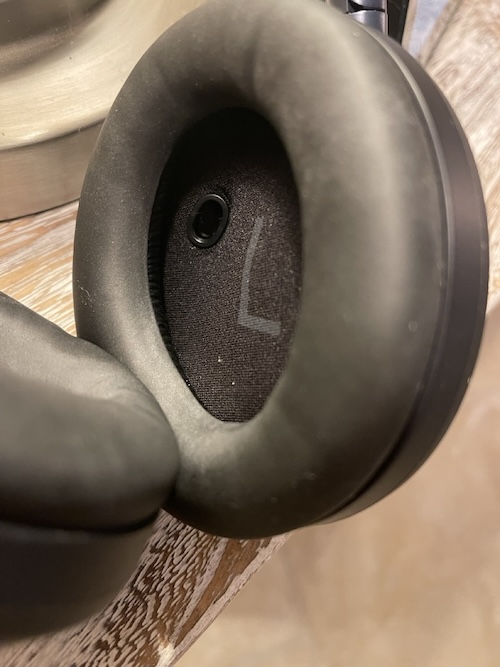
In this picture you can also see the “Wearing detection” sensor - which possible sticks out a little into your ear -
but it’s a good feature, see the Features section below.
Design Issue
One little issue I noticed, is there is a holo chamber inside each ear cup (you can hear this easily by tapping the outside) and while design decision was probably to keep the overall weight down, but the side effect is you can hear resonances, especially when walking (basically you hear the resonance of your steps as you walk). I imagine this could be fixed with a simple “hack” of filling the area behind the driver with foam, so if your main use case is to use this walking, it is something to be aware of. You actually forgot about it quickly so probably a non-issue for most people.
But other than this I personally found it a very comfortable headphone.
Features
Soundcore have really out did themselves with the features on this headphone. You do not normally get this level of capability at a headphone at this price. It actually has more features than the more expensive Q45, so I would imagine we might get a Q45 replacement (maybe a Space Two) in the coming months.
Here are key features that I liked the most:
Sound quality related features:
The Soundcore App is exceptional for allowing someone tweak the sound, this is especially vital IMO on say IOS where there is no system-wide EQ so having EQ tweaked within in the app yet saved to the headphone is a great feature even compared to Apple’s own devices.
-
EQ Features
- Pre-built EQ options - Soundcore have a nice selection of pre-built EQ and the “default” Soundcore sound signature lives here though I would not recommend it as it’s the typical bass heavy extreme V-shaped sound.
- HearID - personalisation the tuning - this takes a little bit of time to measure initially but well worth it IMO. This is measuring your hearing and generating a basic “flat” response for you to then further customise.
This is a very nice implementation of the “Mini Hearing test” available separately in the App Store but with the added benefit as it can be used as the basis for further EQ tweaking.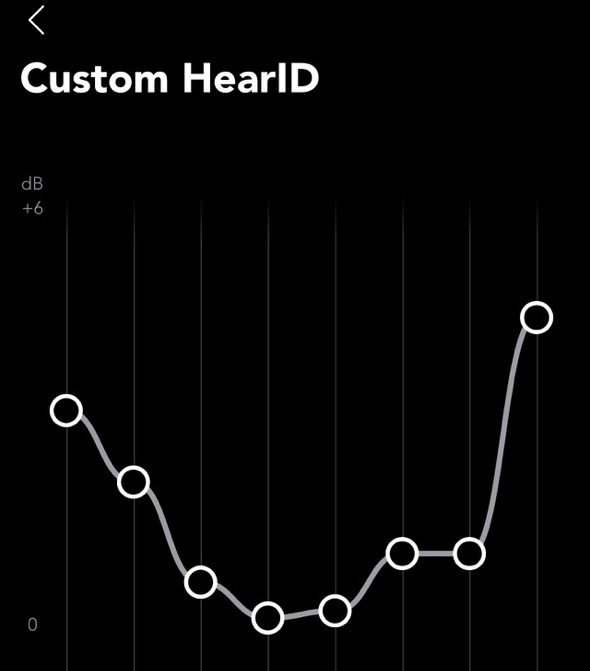
- Custom EQ Options - The 8 band EQ lives here and lots on this feature later in this review
-
Active Noise Cancellation Features
Note: I have put this feature under sound quality because for me the purpose of this headphone is to listen while in a noisy environment (flying or commuting or when in a noisy office environment or even out for a walk).
I have other headphones (typically open backs for a wider sound stage) for listening at home, but having very effective ANC is vital for me when commuting or at the office and it affects how good the overall music sounds.-
Adaptive ANC - One of the key features IMO and usually only available in much more expensive headphones. For me this is the best ANC option - the “most of the time” setting as it reduces the odd feeling of “pressure” you get from wearing an ANC headphone especially when it’s not noisy.
The one exception I found was when I was in a constant noisy environment for example a long train journey - it was better to pick one of the fixed ANC options e.g. level 3 or 5 and leave it for the journey. -
Customised ANC - Soundcore also provide 5 levels of customisation of the ANC, interestingly level 5 isn’t always the best so worth trying different levels if you are in a “fixed” constant noisy environment (like an Airplane or a train).
Interesting rtings measured each level and each level can have a different effect at different frequencies: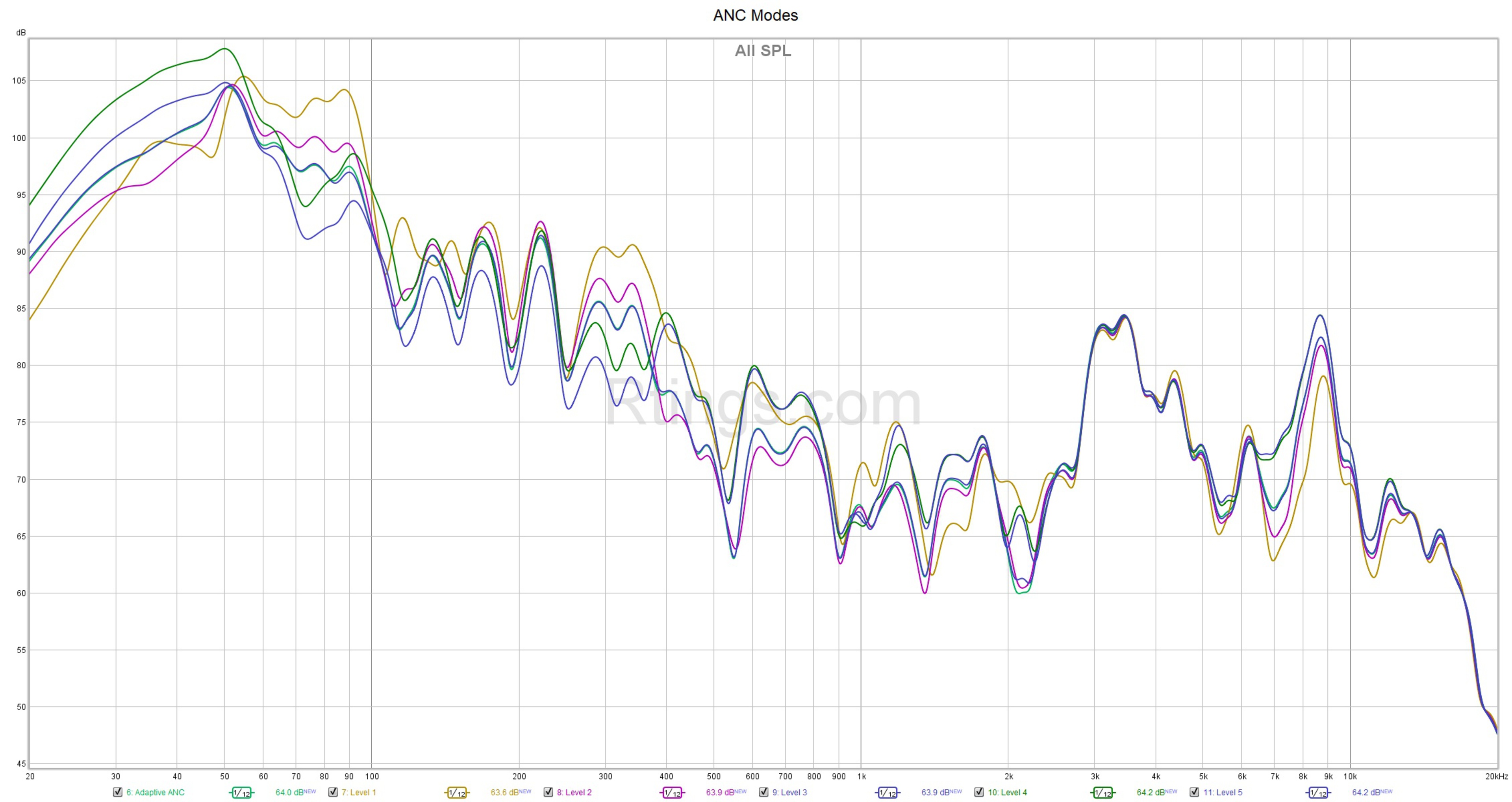
-
Wind Reduction - this is another nice option - but not always effective for me, but did a subtle effect with removing lower levels of wind from “whistling” around you ears
-
Transparency - works well but not nearly as “normal” sounding as say the Transparency on Apple Devices but for the price it good to have and with the “Easy Chat” feature it is great to have.
-
Other features:
-
Easy Chat
This activates transparency when you can hold your hand over an ear cup to lower the volume, so you can chat (for example, it is good on an airplane) and there is a “Speak to enable” option (in beta currently) to do the same, just talk and it will immediately switch on transparency.
-
Multi-Point bluetooth
A now standard bluetooth feature but nicely managed within the “Device List” menu within the app supporting 2 active devices, and it’s easy to enable / disable more devices in the list within the app. Very handy with a mobile and a laptop at the same time. -
Wearing detection
Where the space one will auto pause the music once you take the headphone off. Should be a standard feature on every bluetooth headphone but usually reserved for higher end headphones. Enabled by that sensor just inside the ear cup. -
Auto-power off Should be standard but it good to have - nothing worse than reaching for your headphones only to realise you forgot to switch them off and now the battery is dead
-
LDAC Again a premium feature (though becoming more common place now) - the nearest we can get to lossless audio over bluetooth. Can I tell a difference? Not really but its reassuring that this codec is built it and of course the headphone supports AAC (for Apple devices) and other typical codecs like SBC and AptX. I remember when most cheap bluetooth headphones only support SBC so having an advanced codec like LDAC is a good future-proof feature to have.
-
Button customisation
While it’s nice to have some customisation, it is a very limited with only one button configurable with a Press Once and a Press Twice configuration option and very limited options - but this is a minor complaint as there are enough buttons to support almost all thing you might need without needing to jump into the app or even reach for your phone.
Sound
So in this section I will mainly compare the sound of the Space One with the Q30 and present some custom EQ options for the Space One. Why the Q30?
As I mentioned in the intro, it’s a dirty little secret in the “bargain audiophile world” - in that it could be EQed easily within the Soundcore EQ options to a reasonable good balanced “neutral” sounding headphone. It was not perfect especially with some distortion when ANC is enabled so not exactly a “reference” but good enough for a “second” headphone for commuting and noisy office environments.
Subjective listening experience
So does the Space One have better sound quality than the Q30.
The short answer is no, but you can get very close with a little work on the EQ. That said, it is better when you are mostly in a noisy environment like an office as the benefits of the newer ANC kick in.
But let’s get into the detail of how is sounds:
Default Soundcore profile and initial EQ
The default Soundcore profile is extremely V-Shaped so not recommended by me at all. I initially EQ based on the RTINGs measurements but as you will read later in the review with more accurate measurements of the EQ which then in turn lead to better EQ recommendations:
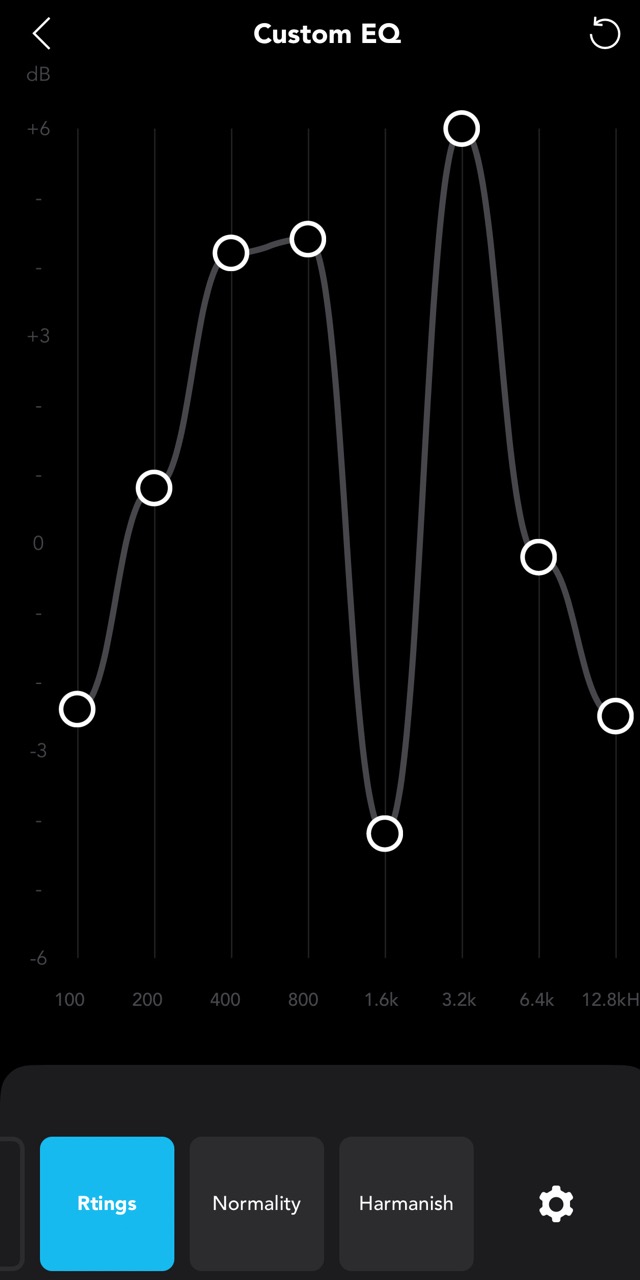
Nothing too clever initially - just “normalisation” as there are considerable audible peak and through in the default sound sadly as you will see in the measurement section, you cannot fully normalize the sound with the built-in EQ.
Bass
I found the bass pretty good (once I got a good seal) and in classic bass test tracks like “James Blake - Limit to your Love” it sounded pretty controlled (which is not often the case in cheaper headphones) and the bass on “Massive Attack - Angel” sounded excellent as did “Portishead - Roads” (though the treble region caused lots of problems on that track). “Billie Ellish - you should see me in a crown” also sounded appropriate with nice been textured bass.
Overall no complaints about the bass (once EQed down a little and balanced with the midrange).
Midrange
The EQ above significantly pulled up the midrange to make it much clearer, this greatly “opened up” the sound on the headphone. Really enjoyed the musicality on pianos and vocals in say Elton John’s back catalog and all the typical “midrange test tracks” like Diana Kroll or say “Paul Simon’s - Diamonds on the souls of her shoes” sounded good.
Treble
So treble was more difficult, when fine tuning my initial EQ I could not get a balanced sound with just the Soundcore EQ settings, specifically the 6.4K region was either too much or too little in the surrounding regions. But I got it acceptable to me, though if you are susceptible to sibilance you will definitely want to lower the 6.4K band even more.
But with this EQ level, I could listen overly treble “heavy” test tracks from say Alanis Morisette and Laurie Anderson without any fatigue and they certainly had “detail”.
Summary
With a good fit, a lot of EQ and the advanced ANC you get the best sound at this price range.
So before I present the revised EQ, I thought I would show some measurements of the Space One.
Measurements and EQ
As I mentioned earlier the default soundcore profile is extremely V-Shaped and while this might appeal to some people I feel that some EQ can greatly benefit the sound of the Space one for most people.
Let’ start with some of the default ‘presets’ offered in the Soundcore app:
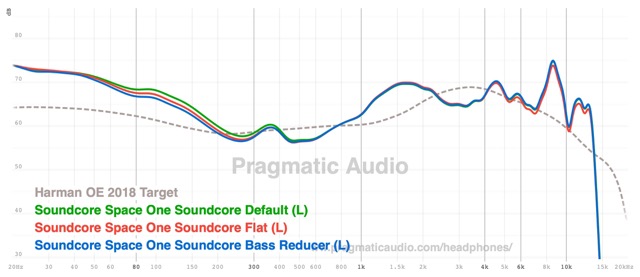
This looked promising as the ‘default’ sound signature is not as bass heavy as the Q30 but as you will see things were not quick as easy to manipulate with the Space One.
And here is Soundcore default compared with what I ultimately tweaked it after doing the measurements:
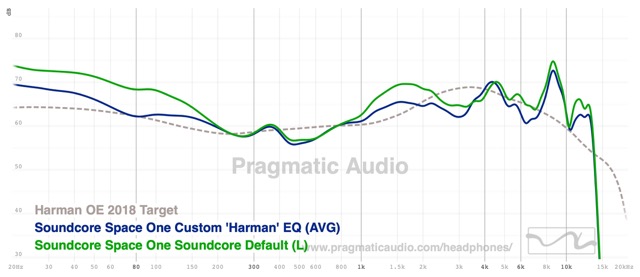
I took lots of measurements of the different EQ min/max levels.
Here are the various min/max levels offered by the 10 band EQ:
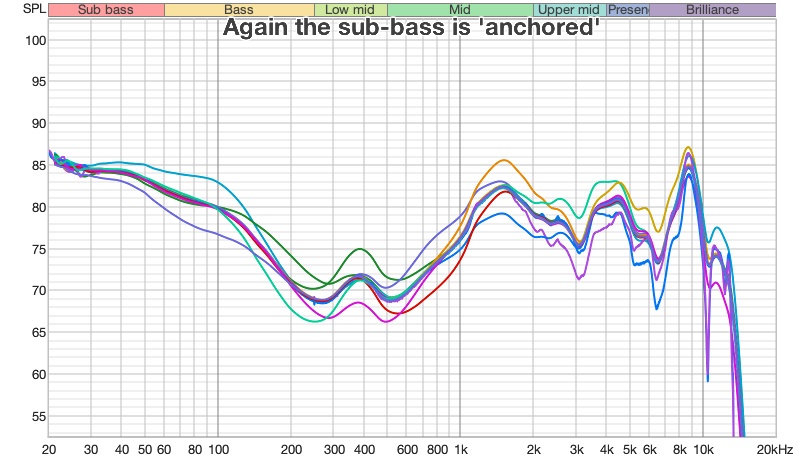
Sadly Normalising these measurements we see that the range between the min and max values are not the same
as other Soundcore devices like the Q30:
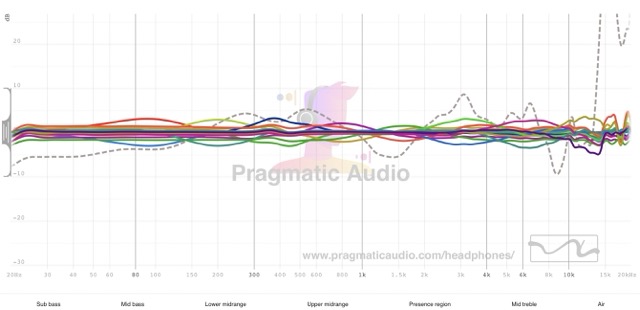
Zooming into one of the EQ filters (the 100 hz) one we see it clearer:
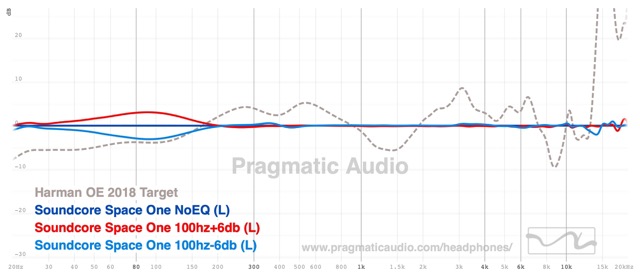
And then inspecting the values we see we only get +/- 3.1db instead of the +/- 6db we did with the Q30:
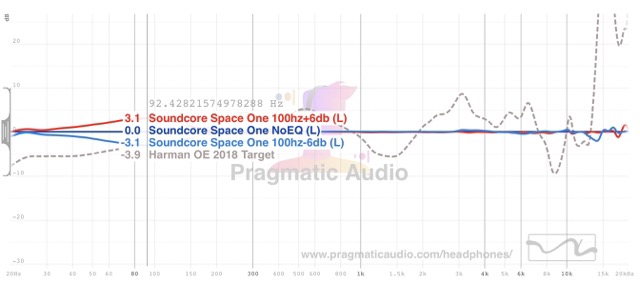
As you can see, sadly with the Space One you do not get the flexibility you can get with the Q30. This is the main problem I have with the Space One, you cannot get it to a ’natural’ sound with the built-in EQ and the best I could do was to flatten the V-shaped sound, the treble is very variable with large peaks so harder to flatten with an external EQ.
Here is the EQ I settled on within the Soundcore App due to the limited range it is ‘pretty drastic’ EQ:
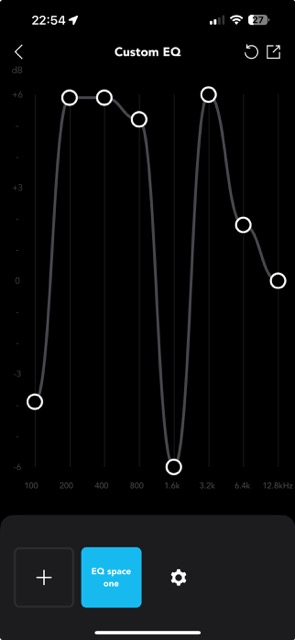
This EQ tames the Frequency response somewhat - pity the EQ doesn’t have more ‘range’ as both the bass and the
treble still need some EQ:
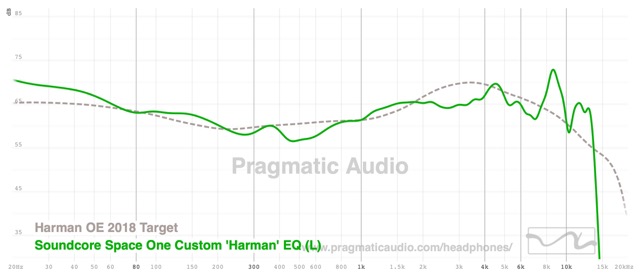
And finally here is the distortion on the Space One:
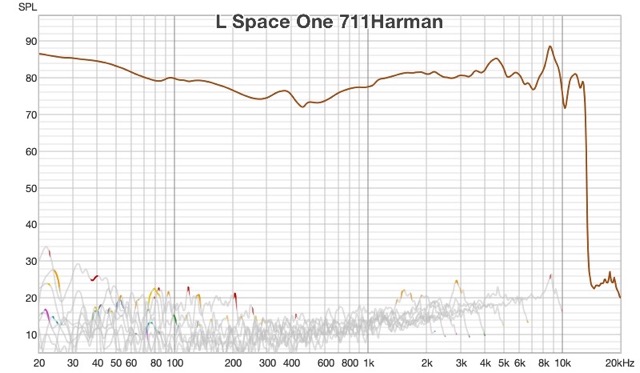
Microphone performance issue
Sadly this is a very weak part of the Space One - I could not get satisfactory noise reduction on the microphone when using it outside. People commented that they could barely hear me over the background noise.
Compared to the Soundcore Q30
So what about my initial question? Is it a replacement for the Q30?
How is the Space One better than the Q30
- EQ Features - HearID is a nice enhancement to quickly get a bass EQ going
- ANC - Adaptive ANC is better and there is less “masking noise” introduced with ANC than on the Q30
- Fit and comfort - this will be subjective but for me this is more comfortable
- So many other features - like “easy chat” etc. are great
How is the Space One worse than the Q30
- Sound profile - it’s harder to EQ with just the soundcore App - basically a third party EQ is really required to get a “neutral” sound
- Resonances - if walking you may notice the sound resonant slightly as you walk
If you are primarily using the Space One with ANC on in a noisy environment (like an office or community by train or airplane) the overall sound is better. The advances in ANC provided by Soundcore e.g. Adaptive ANC especially provides an overall audio experience which IMO is superior to the Q30.
So for me, it is a good replacement for the Q30, the ANC implementation more than makes up for the slightly harder to EQ sound. Though this is mainly because I only use ANC based bluetooth Headphones when commuting and in our noisy office space, but when I am at home I have other much more expensive headphones for listening to music.
My Ratings
Overall I gave the Space One 4 stars, in features it is definitely a 5 star, the price is good, but the measurements let it down.
But the EQ software / firmware can make a huge difference to the sound, without EQ I would only give it a 3 at best.
Conclusions
It’s a good buy at $100 (mainly for its excellent feature set ) and I would guess from the past that Soundcore will have it on sale during Black Friday and say @ 20% off for example, it will be a great bargain. But don’t forget to EQ it.